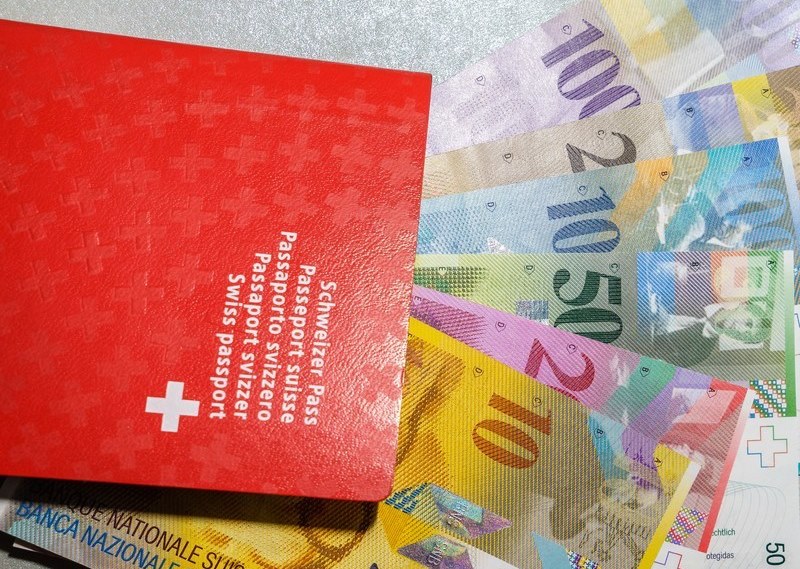In Geneva, where the majority of Russian businessmen and their families live, a reasonably nice flat with 150 to 170 square metres (s qm) of floor space sells for between 2 and 2.5 million Swiss francs (CHF) at minimum.
Housing in Geneva generally costs 5,000-20,000 CHF per s qm, with properties built in the 1970s and 1980s considered to be modern structures.
Luxury residences – villas and apartments built between the 17th and 19th Centuries on the shores of Lake Geneva or in Geneva’s historic old town – cost much more. A detached house in an exclusive area with about 400 sq m of floor space standing on a plot of land up to 3,000 sq m in size can cost over 5 million CHF.
A Russian citizen who has the right to reside and work in Switzerland (B Permit status) is only allowed to buy one residential property, although there are no limitations on commercial real estate transactions. This residential property can be a flat of any size, for example, or a detached building standing on a plot of land measuring no more than 3,000 sq m. Foreign buyers seeking to acquire a larger plot of land need to get an additional permit from the local authorities.
A Russian citizen who has lived in Switzerland for more than five years may obtain C Permit status, which doesn’t impose the previously mentioned limitation on buying property. However, they will need a special permit to make any changes on the land, house or flat they purchase.
Russian property buyers in Switzerland are often shocked by the disparity between the high property values and the moderate quality of housing, which costs 10,000 to 15,000 CHF per sq m on average in Geneva’s most expensive and prestigious communities. There are several reasons for this, including traditional Protestant values concerning property ownership.
Houses in Switzerland generally appear modest, with a considerable number of rooms located on the ground floor or at basement level. This is due to the fact that local legislation does not consider these rooms as residential areas, which allows owners to considerably increase a property’s real living space.
The amount of living space and number of storeys allowed are determined according to the size of the plot of land and a given city or village’s architectural requirements.
As a rule, the floor space of a residential building may not exceed 10% of the size of the plot on which it stands.
The topography of the land in this region is well suited to terraced structures, with houses commonly built into the sides of mountains. No more than 20% of residential buildings stand on relatively level ground in Switzerland. Cities and villages in this mountainous country were traditionally built on mountain slopes, which is why many old and new houses have a basement floor accounting for at least 25% of the total real living space.
Swiss houses built between the 1960s and 1990s have walls which aren’t as thick as those in modern Russian villas.
This is why many new Russian owners in Switzerland seek to strengthen and winterise the walls of their houses using cutting-edge technology and materials.
Russian property owners also tend to add verandas, conservatories and other architectural elements to their homes, which naturally call for modern architectural and design solutions.
It is often more profitable to buy a vacant plot of land, but this is a difficult undertaking because the majority of plots sold are part of a package which entails a preapproved design and construction contract.
Therefore, many Russians buy plots with cheaper and older, often dilapidated houses whose former owners lacked the funds to maintain them in good order.
They then modernise them to suit their tastes and requirements.
As a rule, the value of renovated homes goes up by 30% to 50%. The revised value of these modernised properties is assessed by a Swiss insurance company or bank, which allows new owners to improve mortgage conditions or sell at a profit.
However, newcomers should know that the income tax on property sales (based on the difference between the initial price of acquisition and the sale price after renovation) is 30% after the first year of ownership, 20% after 4 to 5 years, and 10% after 19 to 20 years.
The tax on these transactions only goes down to an acceptable 7% after 24 years of ownership.
The income tax levels can be lower for owners who maintain the property as a permanent residence.
In short, homeowners are advised to consult a lawyer and a tax specialist before deciding to sell their properties.
One of the latest and most fashionable methods of building swimming pools in homes involves using high-strength glass for one of the pool’s walls. This design offers the advantage of merging the pool area with a neighbouring basement room that may contain a bar or a collection of old automobiles.
Another modern architectural solution is the use of water tanks instead of walls in rooms leading to a veranda or conservatory, which can feature a striking panoramic view of Swiss mountains and lakes.
And lastly, there are the so-called smart homes.
Some advice from local leading renovation professionals on how to make your home an exceptional property and considerably increase its value: SMART HOUSES “Many innovations unheard of until recently are now available to everyone,” says Laurent Nobs, a Swiss high-tech company executive. His company, Fréquence TV, is specialized in home equipment.
Modern high technology offers a range of possibilities commonly considered to be close to science fiction, with limits set only by the client’s imagination and budget. A high-tech, or “smart” home provides a homeowner with possibilities for powering the household infrastructure by remote control– power supply, lighting, heating and high-end acoustic systems.
The system also makes it possible to programme lights and music for a child’s birthday party, a romantic dinner, or keep the whole family in touch through a centralised communications device. The system can actually imitate a human presence when there is no one at home to discourage potential thieves and even significantly improve home security with an iris recognition unit.
It is important to decide which of these systems the owner wishes to install before beginning construction on a house, because adding “smart” units to existing buildings is not always possible.
Fréquence TV Sàrl 32, Av du Mont Blanc CH-1196 Gland Tel: + 41 22 369 42 02 Fax: + 41 22 369 42 04 Е-mail: info@frequence-tv.ch Internet: : www.frequence-tv.ch SWIMMING WITH FROGS For years, rich property owners have all believed that a swimming pool is an essential part of any house. But having an ordinary swimming pool is virtually commonplace and old-fashioned these days, when there are so many options available on the market. It hardly makes sense to build an ordinary chlorine pool when one can install a picturesque natural-looking pond or even a small tropical indoor pool with a constant water temperature of 27 degrees Celsius, a coral reef and aquatic animals.
Any number of extraordinary options are possible if the client has the budget to match. “We can build anything, from a pond or a tropical pool to a suspended aquarium,” says Francesco Firinu from the Geneva construction company Aqua Novo Tech, which supplies and installs this kind of equipment.
“Once your pond is completed, its biotope begins to develop independently. It will soon have a variety of local wildlife, which will not prevent you from swimming in it,” Firinu adds.
However, one needs to bear in mind that ponds are protected by law in Geneva and some other cantons, and once you’ve had a pond installed it will be difficult to remove it. Therefore, the client needs to think twice before ordering one.
Otherwise, choose to swim in a warm tropical indoor pool, and if you’d rather not swim with fish and coral, watch them through the glass of a large aquarium in your living room. Aquariums can also be of any shape and size provided your designs don’t defy the laws of physics.
AQUA NOVO TECH Sàrl Mont-d'Eau du Milieu 6 1276 Gingins Tel: +41 76 576 46 66













